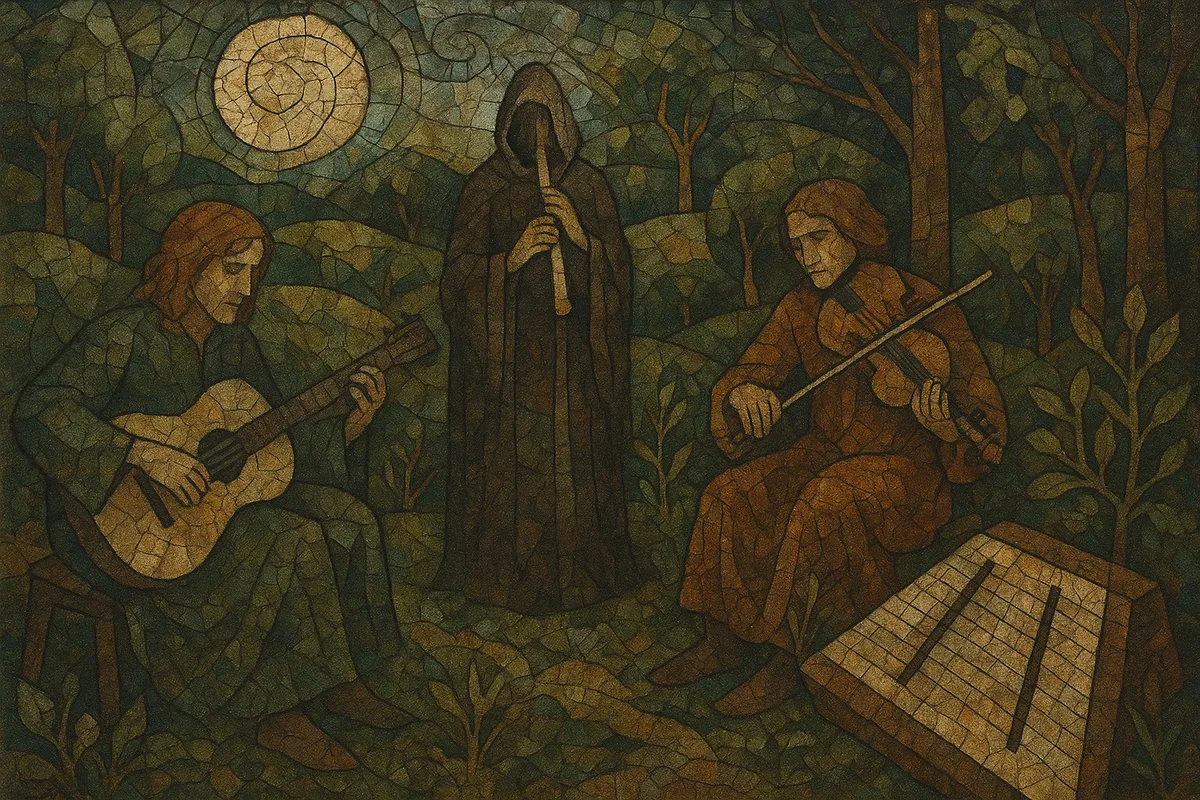
Wyrd folk is a contemporary, experimental strain of folk that blends traditional balladry and acoustic instrumentation with psychedelia, ritualistic drones, and a subtly uncanny, pastoral mood. It often sounds intimate and handmade—fingerpicked guitars, harmoniums, fiddles, flutes, and dulcimers are common—yet it introduces tape hiss, room ambience, drones, and spectral harmonies to tilt the sound toward the otherworldly.
The style draws on British and Celtic folk idioms, the 1960s/70s acid-folk lineage, and the early-2000s “new weird” movement. Lyrics tend to reference folklore, landscape, esoterica, and myth; forms may be circular or chant-like, encouraging a trancey, contemplative state rather than a conventional verse–chorus release. The result is music that feels both ancient and modern: rustic in timbre, but unafraid of collage, ambience, and experimental arrangement.
“Wyrd folk” emerged in the early 2000s as a UK-centered descriptor for a strain of experimental, pastoral folk that revisited the psychedelic and occult-tinged edges of late-1960s/early-1970s British acid-folk. The term signaled a desire to reconnect traditional song forms and acoustic timbres with a dreamy, ritualistic, and subtly unsettling atmosphere.
At the same time that the United States was experiencing the “New Weird America” wave, UK artists and small labels began cultivating a parallel scene. Musicians adapted traditional ballads and dance tunes, but foregrounded drones, field recordings, unusual modal harmonies, and lo-fi textures. This approach reframed folk as a liminal, haunted space rather than a purely documentary or revivalist project.
DIY labels and micro-communities—often rooted in folk clubs, experimental venues, and cottage-industry imprints—were crucial. Releases favored intimate production, homemade artwork, and mythic or folkloric themes. The music circulated through limited-run CDs and vinyl, fostering a cult audience attuned to its blend of tradition and experimentation.
Wyrd folk helped catalyze a sustained interest in occult-pastoral aesthetics across UK experimental music, intersecting with hauntology’s rural eeriness and encouraging cross-pollination with pagan and neo-medieval folk. Its techniques—drones, field ambience, modal harmony, and chant-like forms—echo through contemporary folk-adjacent scenes and continue to inform how artists reimagine heritage material.

